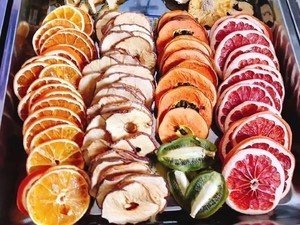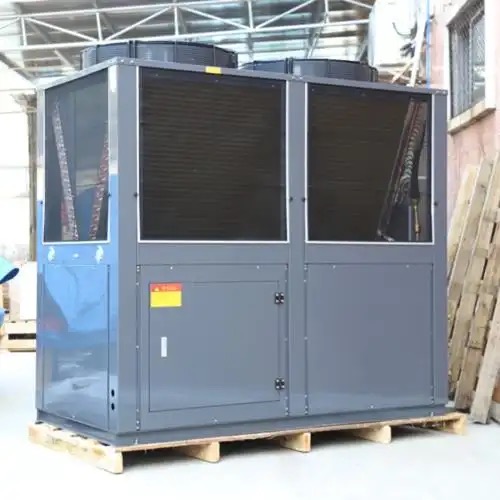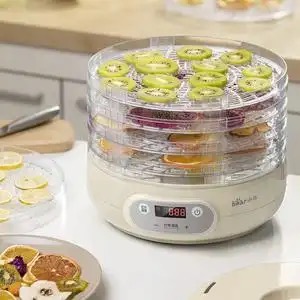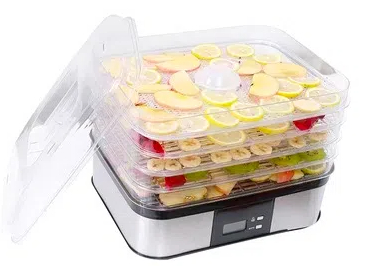
Content Menu
● Introduction
>> Understanding Food Drying Machines
>> Heat Pump Dryers
>> Condenser Dryers
● Advantages of Heat Pump Dryers
>> 1. Energy Efficiency
>> 2. Gentle Drying Process
>> 3. Versatility
>> 4. Environmental Benefits
>> 5. Consistent Quality
● Advantages of Condenser Dryers
>> 1. Lower Initial Cost
>> 2. Simplicity of Operation
>> 3. Faster Drying Times
>> 4. Compact Design
● Key Considerations When Choosing Between Heat Pump and Condenser Dryers
● Applications in the Food Industry
● The Future of Food Drying Technology
>> Automation and Smart Technology
>> Enhanced Energy Recovery Systems
>> Sustainability Focus
● Conclusion
● Frequently Asked Questions
>> 1. What is the main difference between heat pump dryers and condenser dryers?
>> 2. Are heat pump dryers more energy-efficient than condenser dryers?
>> 3. Which type of dryer is better for delicate foods?
>> 4. What are the maintenance requirements for these machines?
>> 5. Can I use either type of dryer for meat processing?
Introduction
In the world of food processing, particularly in the drying segment, the choice of drying technology can significantly impact efficiency, product quality, and operational costs. This article explores the various aspects of food drying machines, focusing on heat pump dryers and condenser dryers. We will delve into their functionalities, advantages, and applications in the food industry.Food drying is a crucial process that not only extends the shelf life of food products but also enhances their flavor and nutritional value. As the demand for dried foods continues to grow globally, understanding the differences between various drying technologies becomes essential for manufacturers and processors.

Understanding Food Drying Machines
Food drying machines are essential for preserving food by removing moisture. This process inhibits the growth of bacteria and mold, extending shelf life while maintaining nutritional value. Among the various types of dryers, heat pump dryers and condenser dryers are prominent.
Heat Pump Dryers
Heat pump dryers utilize a refrigeration cycle to extract moisture from food products. They are known for their energy efficiency and ability to operate at lower temperatures, making them ideal for delicate foods. The heat pump system works by circulating air through a closed-loop system that extracts moisture without significant heat loss.
Condenser Dryers
Condenser dryers, on the other hand, work by heating air to evaporate moisture from the food. The moisture-laden air is then cooled, causing water to condense and be collected. While they may be less energy-efficient than heat pump dryers, they are often more affordable upfront. This technology is straightforward and can be effective for many types of food products.
Advantages of Heat Pump Dryers
1. Energy Efficiency
Heat pump dryers are renowned for their energy efficiency. They can reduce energy consumption by up to 50% compared to traditional drying methods. This is particularly beneficial for large-scale operations where energy costs can be substantial. By using a heat recovery system, these dryers recycle heat within the unit, minimizing waste.

2. Gentle Drying Process
The lower operating temperatures of heat pump dryers help preserve the quality of sensitive foods such as fruits and vegetables. This gentle drying process retains more nutrients and flavor compared to higher temperature methods. For instance, when drying apples or strawberries, heat pump technology can maintain vibrant colors and enhance taste profiles.
3. Versatility
Heat pump dryers can handle a wide range of products, including meats, seafood, fruits, and vegetables. Their adaptability makes them suitable for various applications in the food industry. They can also be adjusted to accommodate different moisture levels and drying times based on specific product requirements.
4. Environmental Benefits
With their lower energy consumption and reduced carbon footprint, heat pump dryers align with sustainable practices in food processing. As consumers become more environmentally conscious, adopting energy-efficient technologies can also enhance a brand's reputation.
5. Consistent Quality
Heat pump dryers provide consistent drying results due to their controlled environment. This consistency is crucial in commercial settings where product quality must meet strict standards.
Advantages of Condenser Dryers
1. Lower Initial Cost
Condenser dryers generally have a lower purchase price compared to heat pump dryers. For businesses with limited budgets or those just starting out, this can be a significant advantage. The initial investment may allow new businesses to allocate funds to other critical areas such as marketing or product development.
2. Simplicity of Operation
Condenser dryers are often simpler to operate and maintain than heat pump models. This ease of use can be appealing for smaller operations or those without specialized staff. Many models come with straightforward controls that allow operators to set drying times and temperatures easily.
3. Faster Drying Times
In some cases, condenser dryers can achieve faster drying times due to higher operating temperatures, making them suitable for certain applications where speed is critical. For example, in bulk processing operations where time is money, condenser technology may provide an edge.
4. Compact Design
Many condenser dryers come in compact designs that require less floor space than larger heat pump units. This feature is particularly advantageous for small facilities or those with limited space.
Key Considerations When Choosing Between Heat Pump and Condenser Dryers
When deciding between a heat pump dryer and a condenser dryer for food processing, several factors should be considered:
1. Product Type: Delicate items may benefit from heat pump technology due to its lower temperatures.
2. Budget: Evaluate both initial costs and long-term operational savings.
3. Energy Costs: Consider local energy prices when assessing potential savings.
4. Space Requirements: Ensure adequate space for installation and operation.
5. Maintenance Needs: Assess the maintenance requirements of each type.
6. Production Volume: High-volume operations may favor energy-efficient models despite higher upfront costs.
7. Regulatory Compliance: Ensure that your chosen dryer meets any local food safety regulations.
Applications in the Food Industry
Both heat pump and condenser dryers have their places in food processing:
1. Heat Pump Dryers: Ideal for fruits (like apples and bananas), vegetables (such as carrots), herbs (like basil), and meats (like jerky). Their ability to dry at lower temperatures helps retain essential oils in herbs and prevents discoloration in fruits.
2. Condenser Dryers: Often used for bulk drying processes where speed is essential or where initial investment costs need to be minimized. They are commonly employed in commercial settings for products like pasta or grains that require rapid moisture removal.
The Future of Food Drying Technology
As technology advances, we can expect further innovations in food drying methods:
Automation and Smart Technology
The integration of smart technology into drying machines allows for real-time monitoring of moisture levels and temperature control through mobile apps or centralized systems. This capability enhances precision in drying processes and minimizes human error.
Enhanced Energy Recovery Systems
Future models may incorporate advanced energy recovery systems that further reduce energy consumption by capturing waste heat from the drying process and reusing it within the system.
Sustainability Focus
With increasing pressure on industries to adopt sustainable practices, manufacturers are likely to focus on developing eco-friendly materials and processes that reduce environmental impact while maintaining efficiency.
Conclusion
In conclusion, both heat pump dryers and condenser dryers offer unique advantages depending on specific operational needs in the food industry. Heat pump dryers provide superior energy efficiency and product quality retention but come at a higher initial cost. Conversely, condenser dryers offer a more affordable option with faster drying capabilities but may compromise on energy efficiency and product quality.Choosing the right dryer ultimately depends on your business's specific requirements, including budget constraints, product types being processed, and long-term operational goals.

Frequently Asked Questions
1. What is the main difference between heat pump dryers and condenser dryers?
Heat pump dryers use a refrigeration cycle to dry food at lower temperatures efficiently, while condenser dryers use heated air that cools down to condense moisture.
2. Are heat pump dryers more energy-efficient than condenser dryers?
Yes, heat pump dryers can save up to 50% more energy compared to traditional condenser dryers due to their efficient drying process.
3. Which type of dryer is better for delicate foods?
Heat pump dryers are better suited for delicate foods as they operate at lower temperatures that help preserve flavor and nutrients.
4. What are the maintenance requirements for these machines?
Heat pump dryers typically require regular cleaning of filters and occasional servicing of components, while condenser dryers may need less frequent maintenance but should still be checked periodically.
5. Can I use either type of dryer for meat processing?
Yes, both types can be used for meat processing; however, heat pump dryers may provide better quality retention due to their lower drying temperatures.












